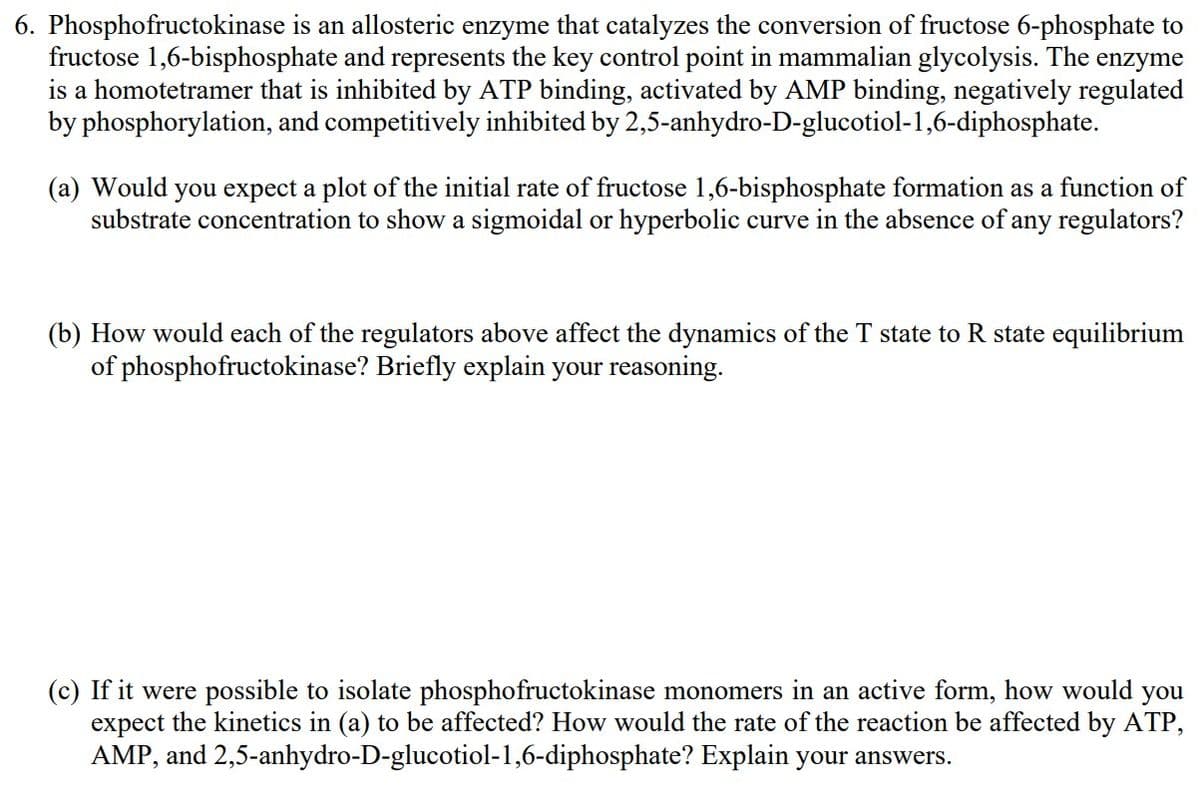6. Phosphofructokinase is an allosteric enzyme that catalyzes the conversion of fructose 6-phosphate to fructose 1,6-bisphosphate and represents the key control point in mammalian glycolysis. The enzyme is a homotetramer that is inhibited by ATP binding, activated by AMP binding, negatively regulated by phosphorylation, and competitively inhibited by 2,5-anhydro-D-glucotiol-1,6-diphosphate. (a) Would you expect a plot of the initial rate of fructose 1,6-bisphosphate formation as a function of substrate concentration to show a sigmoidal or hyperbolic curve in the absence of any regulators? (b) How would each of the regulators above affect the dynamics of the T state to R state equilibrium of phosphofructokinase? Briefly explain your reasoning. (c) If it were possible to isolate phosphofructokinase monomers in an active form, how would you expect the kinetics in (a) to be affected? How would the rate of the reaction be affected by ATP, AMP, and 2,5-anhydro-D-glucotiol-1,6-diphosphate? Explain your answers.

Trending now
This is a popular solution!
Step by step
Solved in 3 steps

For B in the answer it is mentioned,
"If the allosteric regulators increased the affinity of the enzyme for its substrates, then the equilibrium would shift to the right, and more of the enzyme would be in the R state. If the allosteric regulators decreased the affinity of the enzyme for its substrates, then the equilibrium would shift to the left, and more of the enzyme would be in the T-state."
I don't know how this answers the question though in regards to how the enzyme is affected by its regulators as mentioned in at the top of the problem with ATP, AMP, Phosphorylation and 2,5-anhydro-D-Glucotiol-1,6-diphosphate. Could this answer be restated or reexplained?
I'm a bit confused for part c answer to this question, would it be possible to restate the answer and explain?







